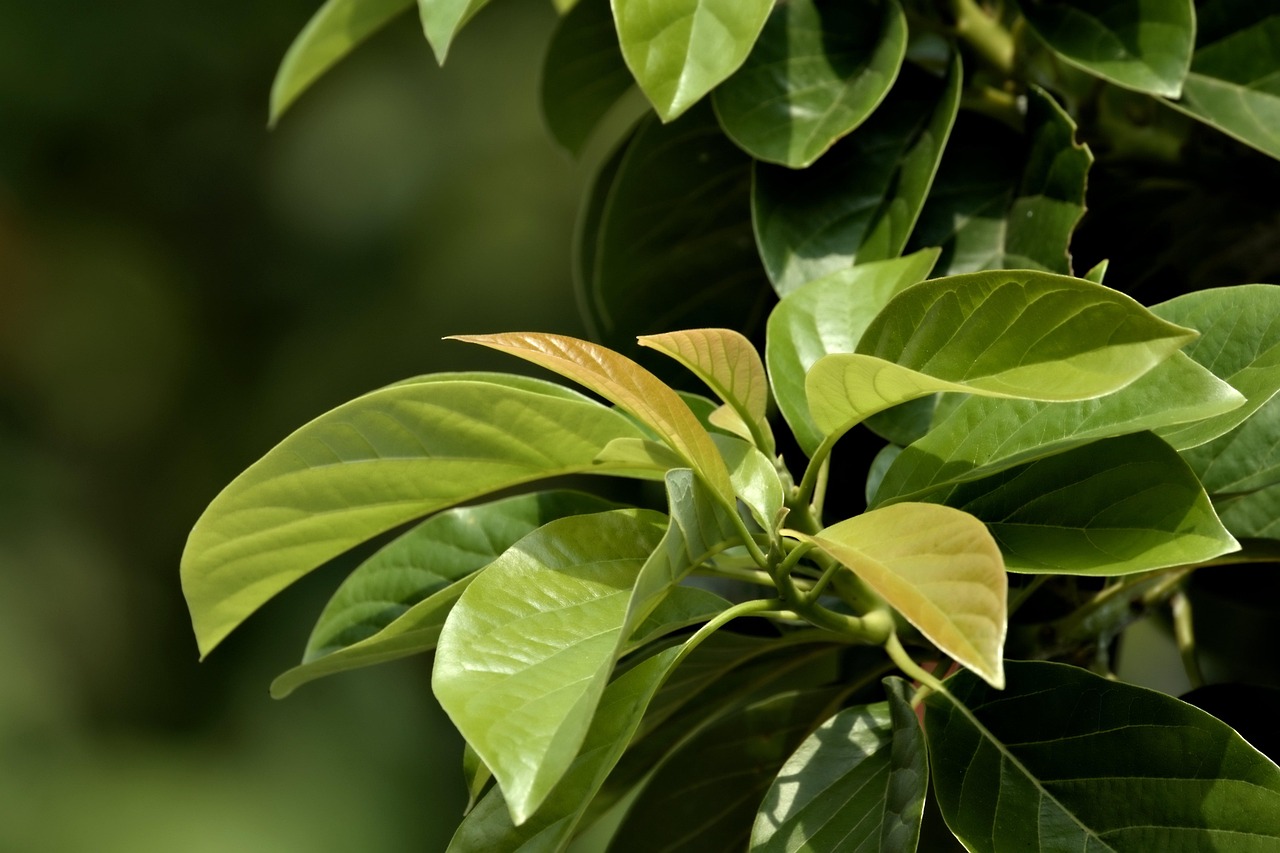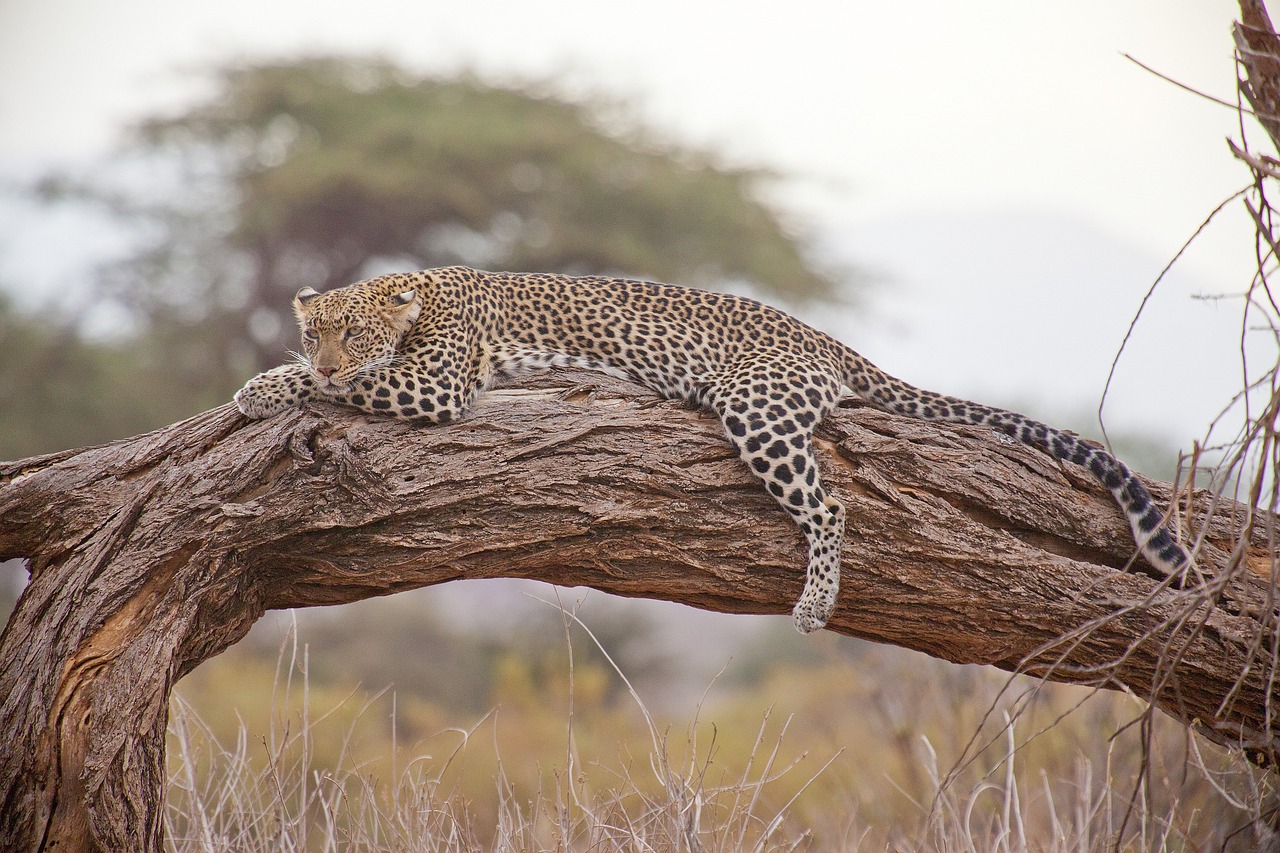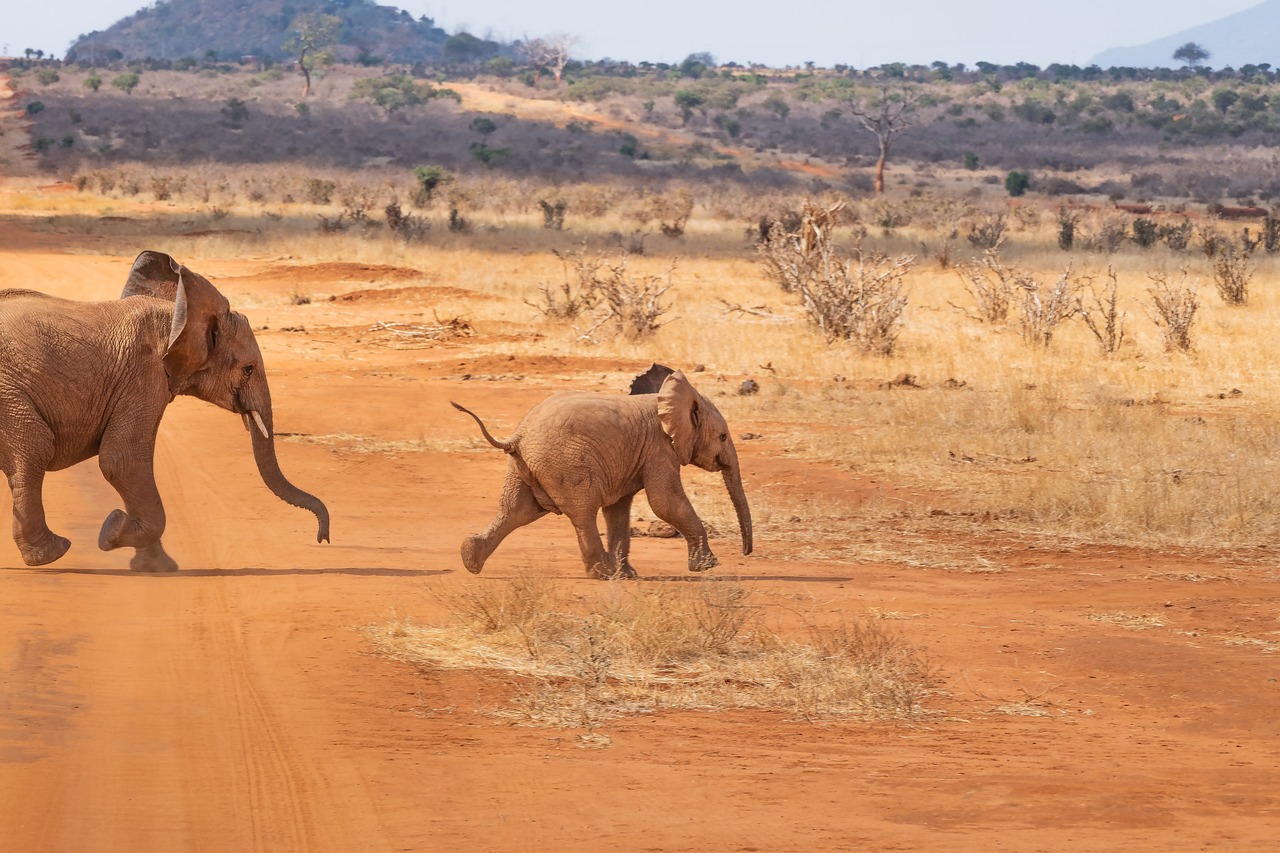The tree growth rate in Kenya’s Eastern African ecosystems varies significantly among species and environmental conditions, typically ranging from 0.5 to 2.5 meters per year. Factors such as rainfall, soil quality, and local climate greatly influence these rates.
Understanding Tree Growth in Kenya
Kenya is home to diverse ecosystems that support a wide range of tree species. These ecosystems include savannas, forests, and wetlands, each with unique characteristics that affect tree growth rates. In these environments, trees play a crucial role in maintaining ecological balance. They provide habitat for wildlife, contribute to carbon sequestration, and support local communities.

The growth rate of trees is influenced by several factors including species type, climate conditions, and soil quality. For instance, fast-growing species like the Eucalyptus may thrive in certain areas, while indigenous species such as the Acacia may grow more slowly but are better adapted to local conditions.
Key Factors Influencing Growth Rates
Several key factors affect tree growth rates in Kenya’s Eastern African ecosystems:
- Climate: Temperature and rainfall patterns significantly impact tree growth. Areas with higher rainfall typically support faster growth.
- Soil Quality: Nutrient-rich soils promote healthier tree growth. Poor soil may stunt growth.
- Species Diversity: The variety of tree species influences overall ecosystem health and resilience.
- Pest and Disease Pressure: Infestations can hinder growth and lead to higher mortality rates among trees.
Tree Species in Eastern African Ecosystems
Different tree species exhibit varying growth rates due to their specific adaptations to the environment. Here are some notable species found in Kenya:

| Tree Species | Average Growth Rate (m/year) | Preferred Climate |
|---|---|---|
| Eucalyptus | 1.5 – 3 | Tropical to Subtropical |
| Acacia | 0.5 – 2 | Arid to Semi-arid |
| Baobab | 0.1 – 0.5 | Tropical Savanna |
| Pine (Pinus patula) | 1 – 2 | Highland Areas |
The Eucalyptus species is among the fastest growing trees in Kenya, making it popular for timber and reforestation projects. However, indigenous species like Acacia are critical for preserving biodiversity and supporting local wildlife.
The Role of Local Communities
Local communities play an important role in managing tree growth and conservation efforts. Many communities depend on trees for their livelihoods, whether through timber production or non-timber forest products like fruits and nuts. Sustainable practices are essential to balance ecological needs with economic benefits.
Community-led initiatives often focus on reforestation and afforestation projects. These projects not only enhance tree cover but also improve soil quality and water retention, further supporting local ecosystems. Engaging local populations in these efforts ensures that tree growth rates can be sustained over the long term.

Conservation Challenges
Despite the importance of trees, various challenges threaten their growth in Kenya. Deforestation driven by agricultural expansion and urbanization significantly impacts tree populations. Climate change also poses a threat by altering rainfall patterns and increasing temperatures, which can further stress tree growth.
Addressing these challenges requires a multi-faceted approach that includes policy changes, public awareness campaigns, and investment in sustainable practices. Collaborative efforts between governments, NGOs, and local communities are vital for protecting Kenya’s rich tree heritage.
Tree Growth Measurement Techniques
Measuring tree growth is essential for understanding the health of ecosystems and managing forest resources effectively. Various techniques are employed to assess the growth rates of trees in Kenya’s Eastern African ecosystems. These methods range from simple observational techniques to advanced technological approaches.
Traditional Measurement Methods
Traditional methods of measuring tree growth often involve straightforward techniques that have been used for many years. Some of these methods include:

- Height Measurements: Using a measuring tape or clinometer, researchers can determine the height of a tree from its base to the top. This gives an indication of the overall growth over time.
- Diameter at Breast Height (DBH): The diameter of a tree is measured at 1.3 meters above the ground. Tracking changes in DBH can help estimate growth rates.
- Annual Increment Analysis: By measuring and comparing tree height and DBH at regular intervals, researchers can calculate the annual growth increment.
Advanced Measurement Techniques
In addition to traditional methods, modern technology has introduced more sophisticated ways to measure tree growth:
- Remote Sensing: Satellite imagery and aerial photography can be utilized to monitor forest cover and growth patterns over large areas, providing valuable data for forest management.
- LiDAR Technology: Light Detection and Ranging (LiDAR) uses laser pulses to create detailed 3D maps of forests, enabling precise measurements of tree height and canopy structure.
- Growth Modeling Software: Various computer models can predict tree growth under different environmental conditions, helping researchers simulate future forest scenarios.
The Impact of Climate on Tree Growth
The climate in Kenya plays a pivotal role in determining tree growth rates. With its varied climates across different regions, the effects on tree species can be profound. Understanding these impacts helps in predicting how trees might respond to changing climates.
Temperature Effects
Temperature influences not only the metabolic processes of trees but also their overall health. Here are some key points regarding temperature effects:
- Optimal Growth Temperature: Most tree species have a specific temperature range in which they grow best. Deviations from this range can lead to stunted growth or increased vulnerability to disease.
- Heat Stress: Elevated temperatures can lead to heat stress, causing trees to lose leaves or even die if they cannot adapt quickly enough.
Rainfall Patterns
Rainfall is another critical factor affecting tree growth. In Kenya, rainfall patterns are highly variable:
- Amount and Distribution: Trees require sufficient moisture for optimal growth. Irregular rainfall patterns can lead to drought stress, negatively impacting growth rates.
- Soil Moisture: Adequate soil moisture is essential for nutrient uptake. Trees in regions with consistent rainfall often show better growth compared to those in drier areas.
The Role of Soil Quality in Tree Growth
The quality of soil directly influences the growth rate and health of trees. In Kenya, different regions exhibit varying soil types, which play a crucial role in supporting tree life.
Soil Nutrients
Nutrient-rich soils generally support healthy tree growth. Key nutrients include:
- Nitrogen: Essential for leaf development and overall growth.
- Phosphorus: Crucial for root development and energy transfer within the plant.
- Potassium: Important for water regulation and stress resistance.
Soil Texture and Structure
The physical properties of soil affect water retention and aeration:
- Sandy Soils: These often drain quickly but may not retain enough moisture for optimal tree growth.
- Clay Soils: While they retain moisture well, they may become compacted, hindering root development.
Understanding the interplay between soil quality, climate, and tree growth is essential for effective management strategies in Kenya’s Eastern African ecosystems. By addressing these factors, it is possible to enhance tree health and promote sustainable forestry practices.
The Importance of Biodiversity for Tree Growth
Biodiversity plays a critical role in enhancing tree growth and overall ecosystem resilience in Kenya’s Eastern African ecosystems. The presence of diverse species contributes to a more stable environment, which supports the growth of trees and other plants.
Benefits of Biodiversity
Diverse ecosystems provide several advantages that directly and indirectly impact tree growth:
- Enhanced Pollination: A variety of flowering plants attracts different pollinators, which can enhance reproductive success in trees and increase seed production.
- Pest Control: Biodiversity helps regulate pest populations naturally. Predatory insects and birds can keep harmful pest species in check, reducing the need for chemical interventions.
- Soil Health: Diverse plant roots contribute to improved soil structure and nutrient cycling, leading to healthier soils that support tree growth.
- Microclimate Regulation: A variety of plant species can create microclimates that protect young trees from extreme weather conditions.
Species Interactions
The interactions between different species within an ecosystem can influence tree growth rates. These interactions include:
- Mutualism: Some plants, including trees, form mutually beneficial relationships with fungi (mycorrhizae) that aid in nutrient absorption from the soil.
- Competition: Trees compete with each other and other plants for light, water, and nutrients. This competition can affect growth rates, particularly in densely populated areas.
- Facilitation: Certain species can facilitate the growth of others. For example, nitrogen-fixing plants can improve soil fertility for surrounding trees.
Tree Growth and Carbon Sequestration
Trees play a vital role in carbon sequestration, helping to mitigate climate change by absorbing carbon dioxide (CO2) from the atmosphere. Understanding tree growth in Kenya is crucial for enhancing carbon storage capacity.
Carbon Sequestration Processes
The process of carbon sequestration involves several key mechanisms:
- Photosynthesis: Trees absorb CO2 through photosynthesis, converting it into biomass that contributes to their growth. The rate of photosynthesis can be influenced by light availability, temperature, and water supply.
- Biomass Accumulation: As trees grow, they store carbon in their trunks, branches, leaves, and roots. Larger trees generally store more carbon due to their greater biomass.
- Soil Carbon Storage: Tree roots contribute to soil organic matter as they die and decompose. This process also enhances soil fertility while storing carbon in the soil.
The Role of Forest Management
Effective forest management practices can enhance carbon sequestration potential by promoting healthy tree growth. Some important strategies include:
- Sustainable Harvesting: Implementing sustainable logging practices ensures that forests can regenerate while maintaining carbon storage capabilities.
- Reforestation and Afforestation: Planting trees in deforested or degraded areas can significantly increase carbon absorption over time.
- Controlled Burns: In some contexts, controlled burns can help manage underbrush and promote the growth of certain tree species, enhancing overall forest health.
The Socioeconomic Importance of Tree Growth
The growth of trees in Kenya’s Eastern African ecosystems has significant socioeconomic implications. Trees provide various resources that support local communities and economies.
Economic Benefits
Trees contribute to the economy in multiple ways:
- Timber Production: Trees are a critical source of timber used for construction, furniture, and paper products. Sustainable management ensures long-term availability.
- Non-Timber Forest Products (NTFPs): Many communities rely on NTFPs such as fruits, nuts, honey, and medicinal plants for their livelihoods.
- Tourism: Forests and natural reserves attract tourists, providing income opportunities for local communities through ecotourism initiatives.
Cultural Significance
Trees also hold cultural importance in various communities across Kenya:
- Cultural Practices: Certain trees are integral to cultural rituals and practices, serving as symbols of identity and heritage.
- Community Gathering Spaces: Trees often provide shade and serve as gathering points for community events and meetings.
Understanding the socioeconomic implications of tree growth in Kenya is essential for promoting sustainable development while conserving vital ecosystems. By integrating ecological health with community needs, it is possible to create a balanced approach to forestry management that benefits both nature and people.
Challenges and Opportunities for Sustainable Forestry
As Kenya continues to navigate the complexities of tree growth rates and ecosystem health, several challenges persist. These challenges can hinder sustainable forestry practices and affect local communities. However, there are also numerous opportunities for improvement and development that can lead to positive outcomes.
Major Challenges to Tree Growth and Ecosystem Health
Some of the significant challenges facing tree growth in Kenya’s Eastern African ecosystems include:
- Deforestation: Rapid deforestation driven by agricultural expansion, logging, and urbanization has led to significant losses in tree cover. This not only affects biodiversity but also contributes to climate change.
- Climate Change: Altered weather patterns, increased temperatures, and prolonged droughts are putting pressure on tree species, making them more susceptible to diseases and pests.
- Land Degradation: Unsustainable land use practices can lead to soil erosion and loss of soil fertility, which directly impacts tree growth rates.
- Poverty: Many communities depend on forests for their livelihoods. Poverty can drive unsustainable practices as individuals seek immediate economic gain over long-term sustainability.
Opportunities for Improvement
Despite these challenges, there are numerous opportunities that can enhance tree growth and promote sustainable forestry in Kenya:
- Community Engagement: Encouraging local communities to participate in forest management can lead to better conservation outcomes. Empowering communities through education and resources fosters a sense of ownership.
- Sustainable Practices: Implementing sustainable logging and agricultural practices can help balance economic needs with environmental preservation. Agroforestry, for example, integrates trees into agricultural systems, improving yields and biodiversity.
- Research and Innovation: Investing in research to develop better tree species suited for local conditions can enhance growth rates. Innovative technologies such as remote sensing can provide valuable data for managing forests effectively.
- Government Policies: Stronger policies aimed at protecting forests and promoting reforestation can create a favorable environment for sustainable forestry. Incentives for conservation efforts can motivate communities to adopt better practices.
Final Thoughts
The tree growth rate in Kenya’s Eastern African ecosystems is a dynamic topic that encompasses various environmental, social, and economic factors. Understanding the interplay between these elements is crucial for promoting sustainable forestry practices that benefit both nature and local communities.
The importance of trees extends beyond their immediate ecological roles; they are integral to cultural identity, economic stability, and environmental health. Ensuring that tree growth rates remain robust requires a holistic approach that addresses climate change, deforestation, and community needs. By fostering biodiversity, enhancing soil quality, and implementing sustainable land management practices, Kenya can work towards preserving its rich ecosystems.
In conclusion, the future of tree growth in Kenya hinges on collaborative efforts among governments, NGOs, researchers, and local communities. By prioritizing sustainable practices and recognizing the cultural significance of trees, Kenya can achieve a balance that nurtures both its environment and its people, paving the way for a greener future.
